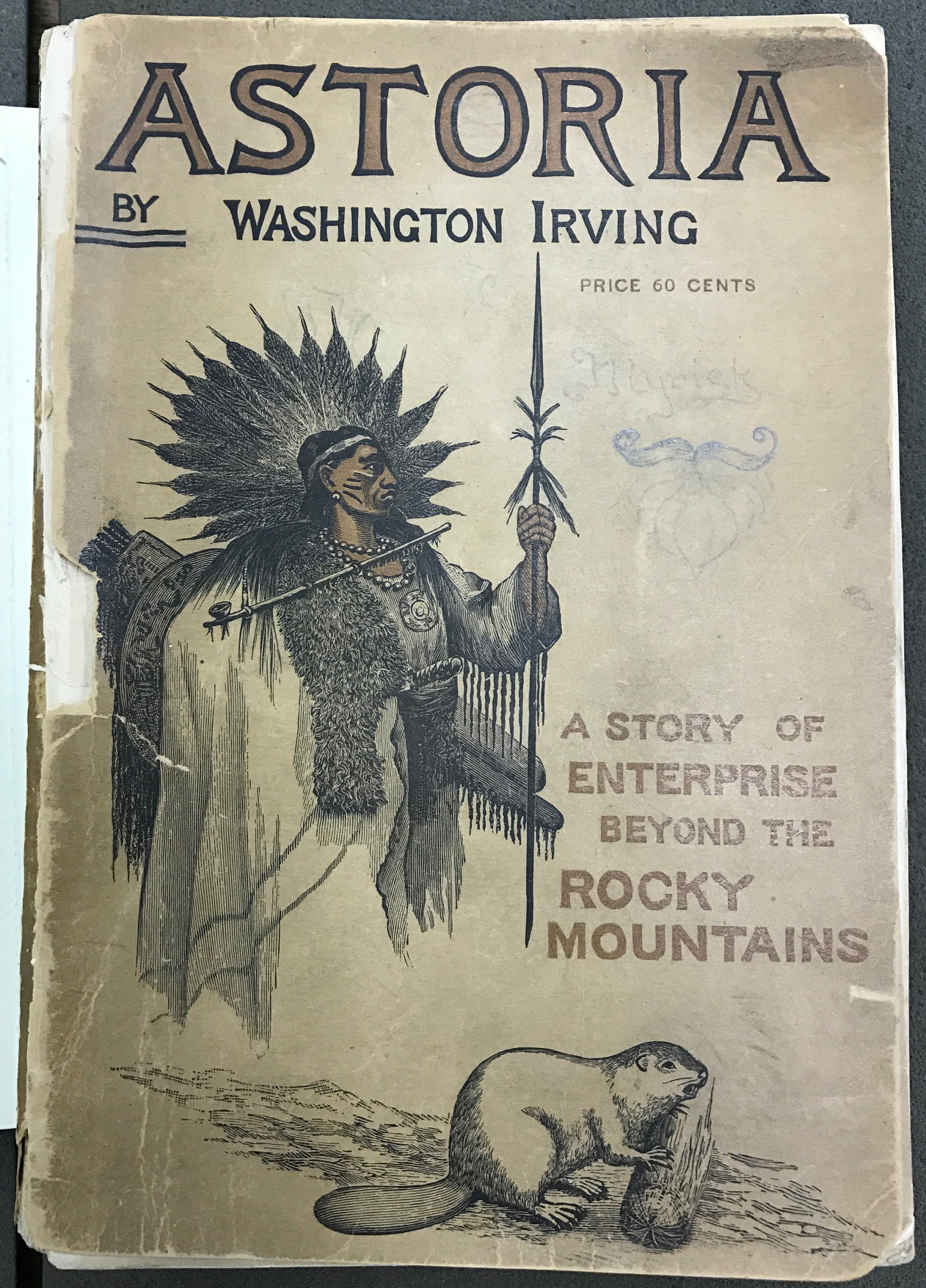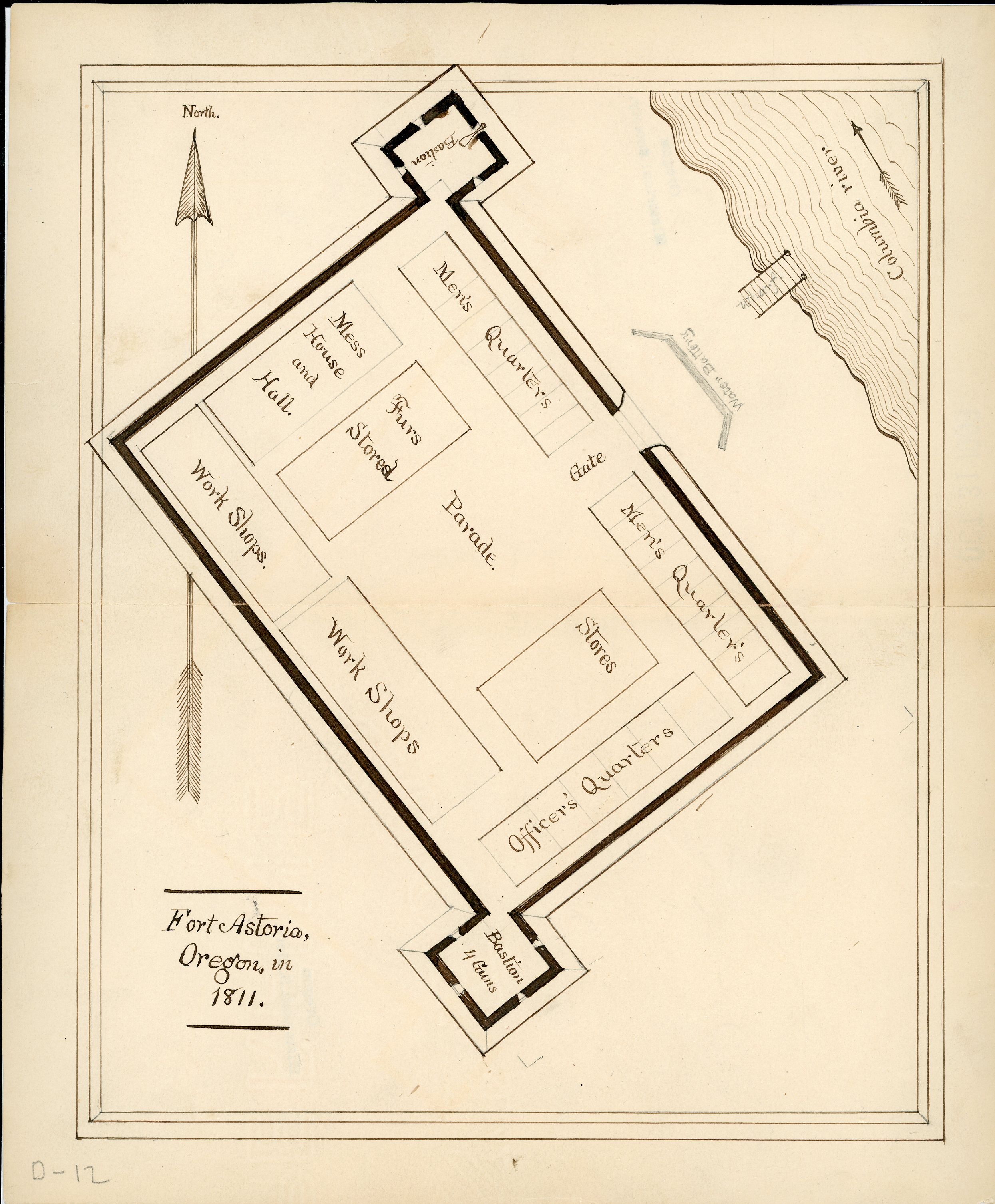Although Washington Irving (1783-1859) never traveled to Oregon Country, he wrote one of the most widely read and influential narratives of the region. His two-volume Astoria, or Anecdotes of an Enterprise beyond the Rocky Mountains, published in 1836, introduced more readers to the Pacific Northwest than any single book up to that time.
Irving was a diplomatic attaché to the U.S. embassy in Madrid, Spain, secretary of the U.S. Embassy and Consulates in England, and the biographer of Christopher Columbus and George Washington. He was the author of satirical and hyperbolic works that poked fun at academic literature, such as Salmangundi in 1807 and A History of New York by Diedrich Knickerbocker in 1809. He also wrote immensely popular stories, including “Rip Van Winkle,” and “The Legend of Sleepy Hollow,” which appeared in A Sketchbook (using a pseudonym, Gregory Crayon) in 1819. Tour on the Prairies, published in 1819, is an account of Irving's only trip west of the Mississippi. His contemporaries called him the Father of American Literature.
In 1834, John Jacob Astor, who named Fort Astoria, offered to pay Irving to write a book promoting the Northwest and, in particular, his Pacific Fur Company, which was the first American fur trading company on the Pacific Coast (1811-1813). The company had failed, but Astor wanted his enterprise both documented and praised. Irving agreed to use Astor’s resources and journals from the Columbia River Basin outposts, but he insisted on producing his own book as an independent speculation rather than the public relations book Astor wanted. He used Astor’s money to hire his nephew, Pierre Munro Irving, who spent two years doing research for the book.
Irving described Astoria as a romance of commerce and empire, “comprising the adventures…of traders, trappers, Indian warriors, hunters and their habits, characters, persons, costumes and descriptions of natural scenery, animals, plants.” Irving had long supported the expansion of the United States and migration to the West, as much for its romantic lore and adventure as for its economic benefits. He wrote in the introduction to Astoria that “the grand enterprises of the great fur companies…in the wild parts of our vast continent have always been themes of charmed interest to me.”
Irving completed the manuscript in two months in the late summer of 1835, relying on the work of Thomas McKenney, the U.S. Superintendent of Indian Trade during the 1820s, and the journals of Meriwether Lewis and William Clark, explorer Steven Long, and traders Ross Cox and Gabriel Franchère. For the first entry in the notebook he kept while writing Astoria, Irving wrote: “everything on a large scale, talk of distance.” Astoria was published in the fall of 1836 by Carey, Lea, & Blanchard in Philadelphia.
Astoria was an immediate bestseller, with more than twenty-five editions produced before Irving’s death in 1859, including translations into French, Dutch, and German. At the time of publication, some members of Congress were promoting settlement of the Oregon Country as a way to thwart British, Russian, and Spanish interests in the region. The book was credited with attracting countless settlers and their families to the Pacific Northwest, who Irving predicted “would form the germ of a wide civilization that would carry the American population across the Rocky Mountains and spread it along the shores of the Pacific.”
Irving ushered his readers into an ethnically diverse, culturally complex West in a story that linked the fur trade and mountain men to large-scale business strategies and the imperial struggle between the United States and Great Britain. He ended Astoria with a salute to John Jacob Astor’s efforts: “It is painful to see a grand and beneficial stroke of genius fail at its aims,” but Irving was pleased to see the flag of the United States “again wav[ing] over Astoria.”
-
Astoria, by Washington Irving, 1890.
Courtesy Oregon Hist. Soc. Research Lib.
-
![Engraved by James S. King]()
Washington Irving, c.1879.
Engraved by James S. King Courtesy Library of Congress, LC-USZ62-103574
-
![]()
Astoria, by Washington Irving, 1890.
Courtesy Oregon Hist. Soc. Research Lib.
Related Entries
-
![Astor Expedition (1810-1813)]()
Astor Expedition (1810-1813)
The Astor Expedition was a grand, two-pronged mission, involving scores…
-
![John Jacob Astor (1763-1848)]()
John Jacob Astor (1763-1848)
John Jacob Astor never visited Oregon or the Pacific Northwest, but his…
Related Historical Records
Map This on the Oregon History WayFinder
The Oregon History Wayfinder is an interactive map that identifies significant places, people, and events in Oregon history.
Further Reading
Aderman, R.M., H.L. Kleinfield, and J.S. Banks, eds. Letters. Vol. II: 1823-1838. Boston: Twayne Publishers, 1979.
Goetzmann, William H. "Introduction." In Astoria, or Anecdotes of an Enterprise beyond the Rocky Mountains, by Washington Irving. Vol. 1. Philadelphia: J.B. Lippincott, 1961.
Irving, W. The Complete Works of Washington Irving, 1810-1856. Madison: University of Wisconsin Press, 1989.
Ronda, James P. Astoria & Empire. Lincoln: University of Nebraska Press, 1990.
Ronda, James P. "Washington Irving's West. Historian 66:3 (2004): 546-51.
Tuttleton, J.W. Washington Irving: The Critical Reaction. New York: Ams Press, 1993.
Williams, S.T. The Life of WashingtonIrving. Vols. 1-2. New York: Octagon Press, 1971.





